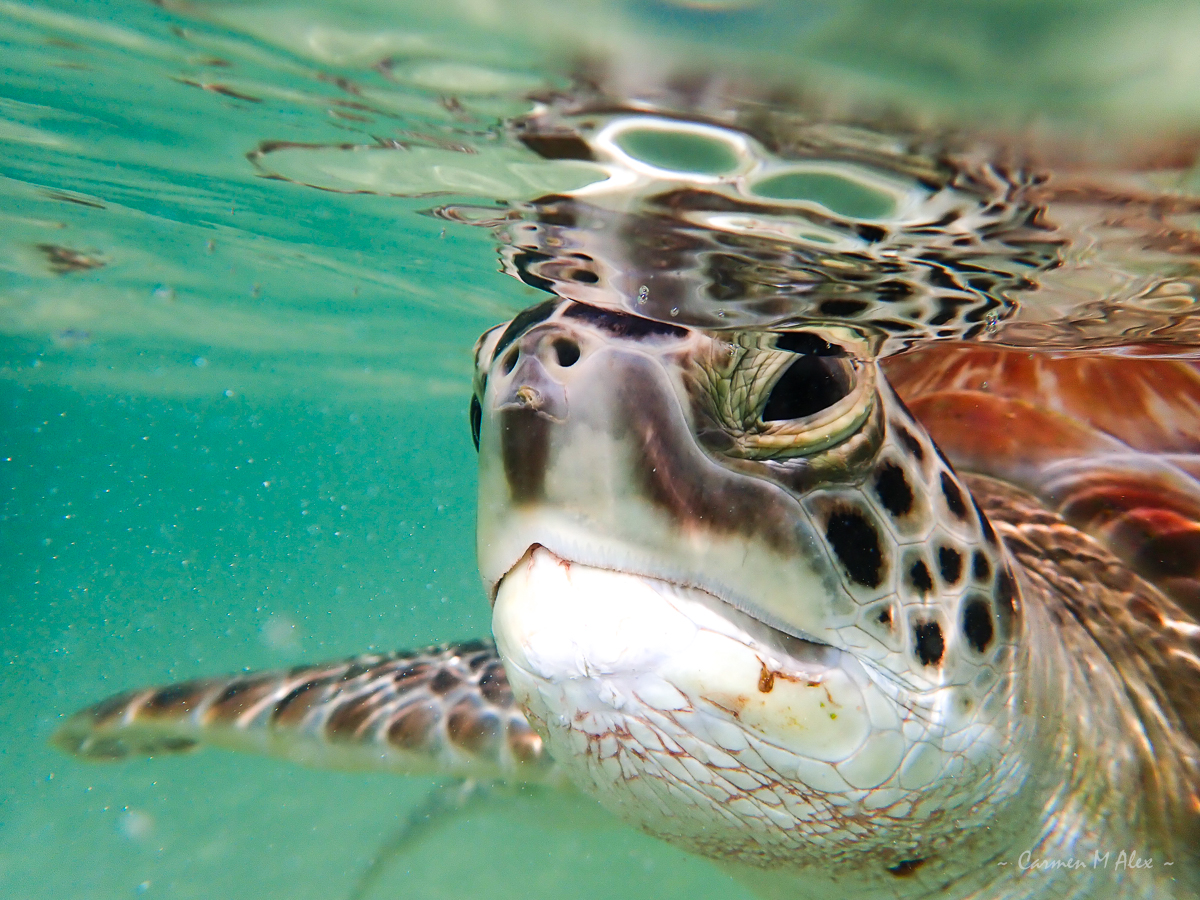So, you’ve just gotten yourself a baby turtle and you want to make sure it has the best care possible. One of the important natural behaviors that baby turtles need to develop is swimming. But how do you encourage them to swim? Well, don’t worry, because in this article we will discuss just that.
Swimming is an essential skill for turtles, as it helps with their overall development and strengthens their muscles. It’s important to provide them with a safe and suitable environment for swimming. Make sure to have a spacious tank or tub filled with clean, warm water. You can also add some aquatic plants or floating objects for them to explore.
Now, you may be wondering how exactly you should introduce your baby turtle to swimming. It’s best to start by placing them gently in the water, ensuring that they can touch the bottom or have a platform to rest on. This way, they can slowly get accustomed to the water. Don’t force them to swim immediately, as it may make them uncomfortable and stressed. Remember, patience is key. With time and gradual exposure, your baby turtle will gain confidence in the water and start swimming on its own.
In the upcoming article, we will dive deeper into other natural behaviors that are important for baby turtles, such as basking and eating. So, stay tuned to learn more about how to provide a nurturing environment for your little shelled friend. Swim on over to the next article for more turtle tips! Baby turtles are fascinating creatures that possess unique instincts and behaviors. One of the most important natural behaviors for baby turtles is swimming. Swimming not only plays a crucial role in their physical development but also prepares them for survival in the wild. In this article, we will delve into the significance of swimming for baby turtles, explore their natural swimming instincts, discuss how to create an ideal water environment, and provide step-by-step guidance on introducing them to water. We will also touch upon suitable swimming spaces, feeding routines in the water, supervision during swimming sessions, interactive swimming activities, common swimming issues, potential risks and hazards, alternative methods for encouraging natural behaviors, and the benefits of swimming for baby turtles. Testimonials from turtle owners, case studies from conservation organizations, and expert opinions will provide valuable insights. By the end of this article, you will understand the importance of swimming in baby turtles and be equipped with the necessary knowledge to encourage this natural behavior in these adorable creatures.
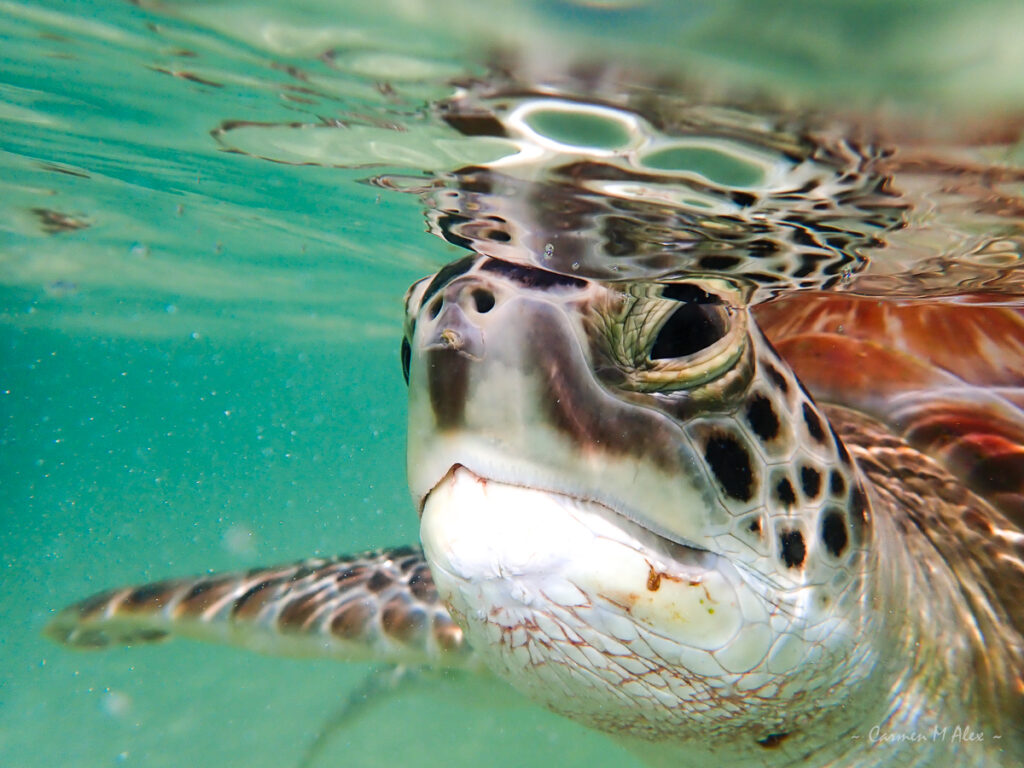
Why is Swimming Important for Baby Turtles?
Development of Muscles and Bones
Swimming is essential for the development of muscles and bones in baby turtles. As they paddle through the water, their muscles and bones are actively engaged, leading to increased strength and growth. Regular swimming exercises promote the growth of strong and healthy muscles, allowing baby turtles to effectively move and navigate in their aquatic environments.
Improvement of Respiratory System
Swimming is a great activity for improving the respiratory system of baby turtles. When they swim, their breathing becomes more rhythmic and coordinated, allowing for better oxygen intake. This enhances their lung capacity and strengthens their respiratory muscles, enabling them to adapt to different water conditions and dive for longer durations.
Enhancement of Coordination and Balance
Swimming plays a vital role in the enhancement of coordination and balance in baby turtles. As they navigate through the water, they learn to control their movements and maintain balance. This improves their overall motor skills and helps them in performing various tasks such as hunting for food, avoiding predators, and interacting with their environment more effectively.
Understanding Baby Turtles’ Natural Swimming Instincts
Ingrained Instincts from Birth
Baby turtles possess natural swimming instincts from birth. These instincts are ingrained in their DNA and are essential for their survival. As soon as they hatch, baby turtles instinctively make their way towards water bodies, guided by the luminance of the moon, stars, or the natural light around them. This shows the innate nature of their swimming abilities.
Beneficial Role of the Yolk Sac
The yolk sac plays a crucial role in the swimming ability of baby turtles. It provides them with important nutrients and energy during their early stages of life. As they absorb the nutrients from the yolk sac, their swimming abilities are gradually strengthened, allowing them to explore their aquatic surroundings with confidence.
Implications for Survival in the Wild
The natural swimming instincts of baby turtles are vital for their survival in the wild. Swimming enables them to escape from predators, find food sources, and locate suitable nesting grounds. Without strong swimming abilities, baby turtles would be highly vulnerable to various threats and would struggle to navigate their natural habitats effectively.
Creating an Ideal Water Environment for Baby Turtles
To encourage swimming behavior in baby turtles, it is essential to provide them with an ideal water environment. Here are some key factors to consider:
Controlling Water Temperature
Maintaining the right water temperature is crucial for baby turtles’ swimming comfort and overall well-being. It is recommended to keep the water temperature between 75-85 degrees Fahrenheit (24-29 degrees Celsius) for most turtle species. A water heater and thermometer can help in regulating and monitoring the temperature effectively.
Maintaining Clean and Clear Water
Clean and clear water is essential for the health and happiness of baby turtles. Regular filtration, water changes, and monitoring of water quality parameters like pH, ammonia, and nitrate levels are necessary to ensure optimal water conditions. Poor water quality can lead to various health issues and hinder the swimming ability of baby turtles.
Providing Sufficient Water Depth
Baby turtles require an adequate water depth to swim comfortably. The water depth should be at least two to three times the length of the turtle’s shell. This provides enough space for them to swim freely and practice their swimming skills. Additionally, it is important to ensure that there are no sharp edges or obstacles in the water that could injure the turtles.
Introducing Baby Turtles to Water: Step-by-Step Guide
Introducing baby turtles to water should be done gradually and with care. Here is a step-by-step guide to help you with the process:
Gradual Acclimation to Water
Start by acclimating baby turtles to water slowly. Place them in a shallow container with a small amount of water initially and gradually increase the water depth over time. This allows them to get accustomed to the water and reduces any potential stress.
Monitoring Initial Reactions
Observe the initial reactions of baby turtles when introduced to water. Some turtles may take to water immediately and start swimming, while others may display timid or hesitant behavior. It is important to be patient and give them time to adjust at their own pace.
Encouraging Exploration and Curiosity
Encourage baby turtles to explore and be curious about the water. Place some floating objects or food items in the water to attract their attention and stimulate their natural instincts. This will help them feel more comfortable and confident in the water.
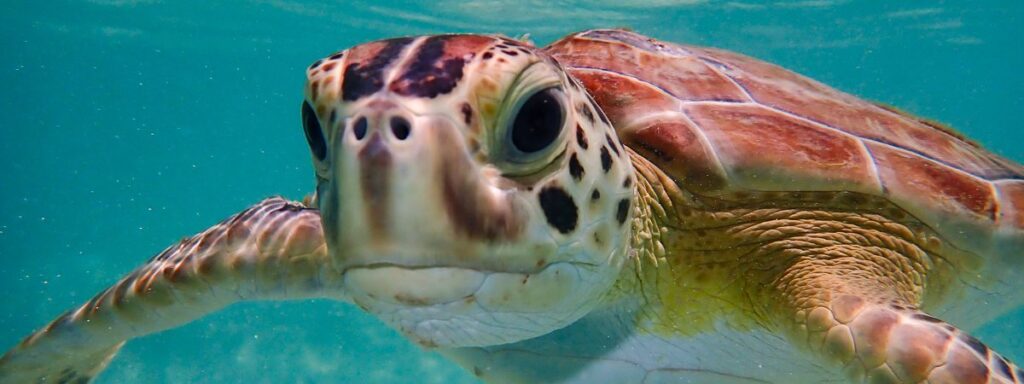
Choosing Suitable Swimming Spaces for Baby Turtles
Providing suitable swimming spaces is essential for the well-being and development of baby turtles. Here are some key considerations when choosing a swimming space:
Importance of Proper Tank Size
The tank or enclosure should have enough space for baby turtles to swim and move around freely. The size of the tank depends on the species and age of the turtles. As they grow, it is necessary to upgrade to larger tanks to accommodate their increasing size and swimming needs adequately.
Incorporating Aquatic Plants and Hiding Spots
Aquatic plants and hiding spots in the swimming space help mimic the natural environments turtles would encounter in the wild. The presence of plants provides a sense of security and allows turtles to engage in natural behaviors such as exploring, foraging, and seeking shelter. It also adds visual interest and enhances the overall aesthetics of the tank.
Balancing Open Swim Areas and Obstacles
It is important to strike a balance between open swim areas and obstacles in the swimming space. While baby turtles need open spaces to practice their swimming, the presence of obstacles like rocks or driftwood provides opportunities for climbing, basking, and exploring. This helps stimulate their natural behaviors and adds complexity to their swimming environment.
Feeding Baby Turtles in the Water
Feeding baby turtles in the water is a great way to promote their swimming abilities and provide a more natural feeding experience. Here are some key considerations when feeding baby turtles in the water:
Selection of Nutritious Aquatic Foods
Offer a variety of nutritious aquatic foods to baby turtles to ensure a balanced diet. Commercial turtle pellets, live or frozen aquatic insects, and leafy greens are all good options. Feeding them in the water not only encourages swimming but also allows them to practice hunting and foraging behaviors.
Adjusting Feeding Routines for Water
Adjust the feeding routines to accommodate feeding in water. For example, place the food on floating platforms or attach feeding clips to the side of the tank, enabling the turtles to swim and feed simultaneously. This promotes natural swimming behaviors and ensures that they can consume their food comfortably.
Ensuring Appropriate Feeding Behavior
Observe the feeding behavior of baby turtles to ensure they are eating properly. Some turtles may need time and assistance in learning to eat in the water. Monitoring their feeding habits and making adjustments as needed will help them develop healthy eating patterns and strengthen their swimming abilities.
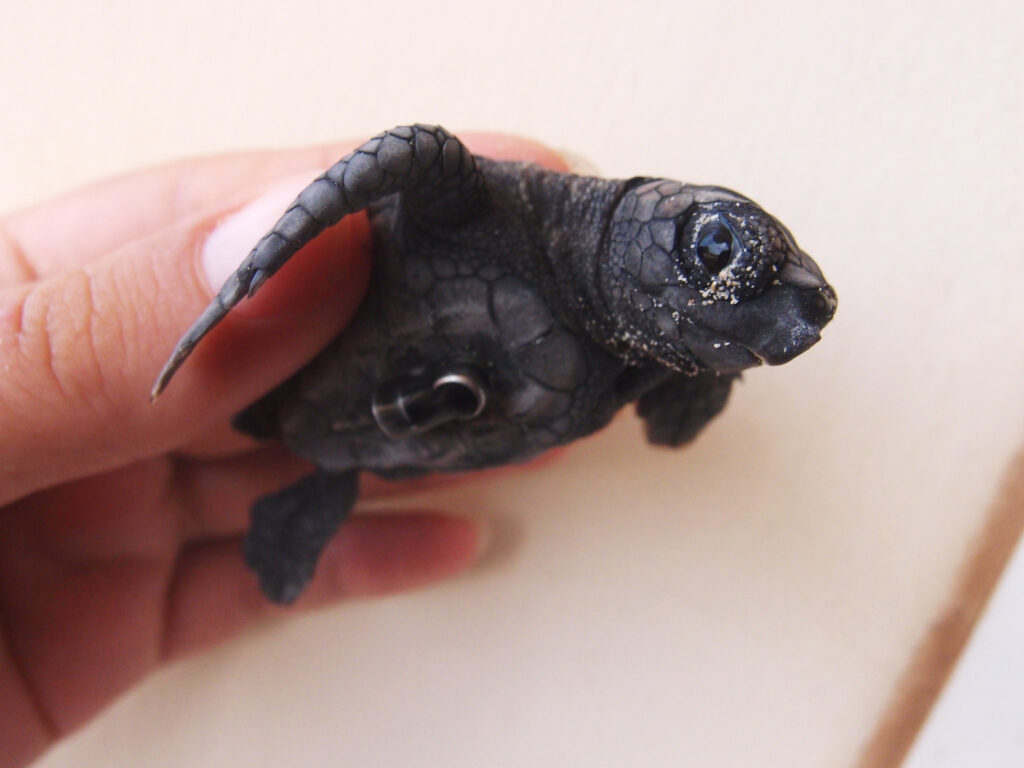
Supervising Baby Turtles’ Swimming Sessions
Supervision is crucial during baby turtles’ swimming sessions to ensure their safety and well-being. Here are some important aspects to consider:
Maintaining Visual Observation
Always keep an eye on baby turtles while they are swimming. This allows you to monitor their behavior, ensure they are swimming comfortably, and address any potential issues promptly. Visual observation also helps you connect with your turtles and understand their swimming patterns and progress.
Ensuring Safety Measures
Take necessary safety measures to protect baby turtles during their swimming sessions. This includes ensuring that the swimming space is free from hazards, keeping dangerous objects out of reach, and providing proper filtration and water quality management to prevent water-borne illnesses.
Monitoring Swimming Patterns and Progress
Regularly monitor the swimming patterns and progress of baby turtles. Notice how they navigate through the water, the duration of their swimming sessions, and any changes in their swimming behavior. This helps identify any potential issues early on and allows for appropriate adjustments and interventions if required.
Implementing Interactive Swimming Activities for Baby Turtles
Interactive swimming activities can make the swimming experiences more engaging and enjoyable for baby turtles. Here are some ideas to consider:
Introducing Floating Toys and Objects
Place floating toys or objects in the swimming space to entertain and stimulate baby turtles. These objects can include ping pong balls, floating platforms, or small aquatic decor items. The turtles can interact with these objects, chase them, or push them around, enhancing their swimming abilities and providing mental enrichment.
Creating Gentle Currents and Waves
Create gentle currents or waves in the swimming space using water pumps or airstones. This adds a dynamic element to the environment and encourages baby turtles to navigate through the water, swim against the currents, and practice their swimming skills effectively.
Organizing Tug-of-War and Chasing Games
Engage in interactive games with baby turtles during their swimming sessions. Tie a long string or a piece of fabric to a floating object and gently tug it in the water, allowing the turtles to chase and interact with it. This stimulates their natural hunting instincts and promotes active swimming.
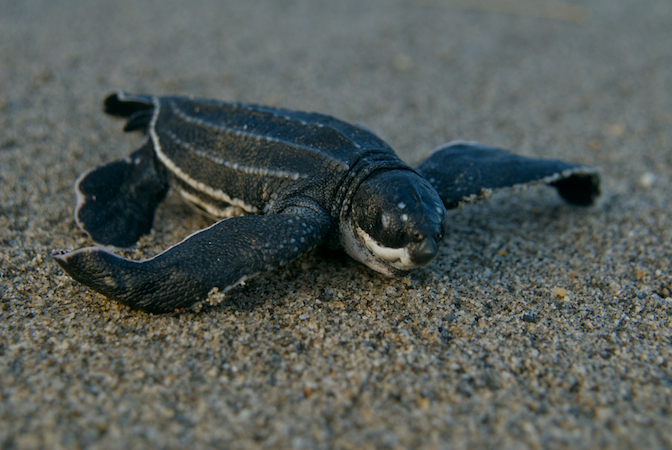
Addressing Common Swimming Issues in Baby Turtles
Like any other activity, swimming in baby turtles can sometimes present challenges. Here are some common swimming issues and how to address them:
Overcoming Fear or Timidity in Water
Some baby turtles may exhibit fear or timidity in the water initially. To help them overcome this, create a calm and safe environment, use shallow water initially, and provide hiding spots or plants where they can retreat to if needed. Gradually introduce them to deeper water and allow them to build confidence at their own pace.
Dealing with Buoyancy Problems
Buoyancy problems may arise in baby turtles due to diet, improper water conditions, or underlying health issues. Consult a veterinarian to address any buoyancy problems and follow their advice to rectify the issue. Adjusting the diet, providing proper basking opportunities, and ensuring optimal water quality can often help resolve buoyancy issues.
Resolving Lack of Interest in Swimming
If baby turtles show a lack of interest in swimming, it is important to provide an environment that stimulates their natural behaviors. Introduce new elements, such as different food items, floating toys, or changes in the swimming space layout to pique their curiosity and encourage swimming. Patience and persistence are key when addressing this issue.
Avoiding Potential Risks and Hazards in Baby Turtles’ Swimming
While swimming is important for baby turtles’ development, it is crucial to be aware of potential risks and hazards. Here are some ways to avoid them:
Preventing Drowning and Submergence
Baby turtles should always be supervised during swimming sessions to prevent drowning or submergence. Ensure that they have easy access to basking areas or floating platforms where they can rest and regulate their body temperature. Smooth ramps or rocks can also be provided to help them easily enter and exit the water.
Avoiding Water Contamination and Pollution
Maintaining clean and clear water is essential to avoid water contamination and pollution. Regular water changes, proper filtration, and adherence to water quality parameters are crucial for the health and well-being of baby turtles. Avoid using harmful chemicals or substances near their swimming space that could potentially contaminate the water.
Minimizing the Risk of Injury
To minimize the risk of injury, ensure that the swimming space is free from sharp edges, rough surfaces, or any objects that could harm the turtles. Regularly inspect the tank for any potential hazards, and remove or modify them to ensure a safe swimming environment.
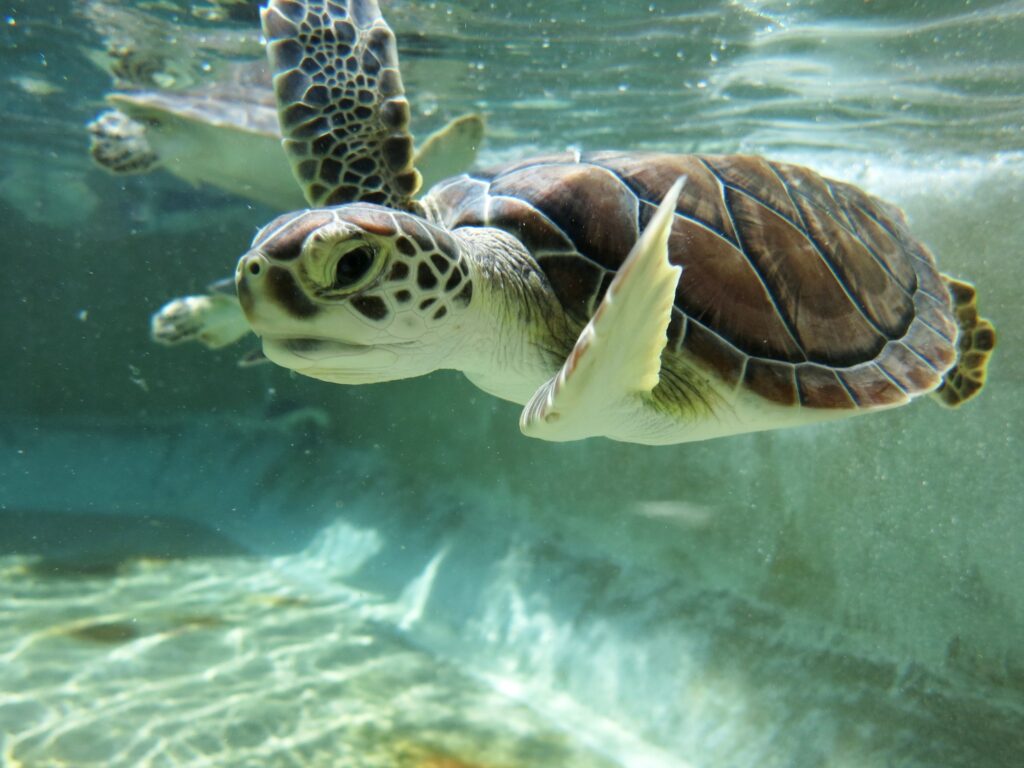
Alternative Methods for Encouraging Natural Behaviors in Baby Turtles
In addition to traditional swimming methods, alternative approaches can be utilized to encourage natural behaviors in baby turtles. Here are some options to consider:
Simulating Swimming with Dry Exercises
If water availability is limited, dry exercises can be used to simulate swimming movements with baby turtles. Gently move their limbs as if they were swimming while they are out of the water. This helps maintain muscle strength and flexibility until they can have access to water again.
Utilizing Artificial Aquatic Environments
Artificial aquatic environments, such as specially designed tanks or pools, can be utilized to promote swimming behaviors in baby turtles. These environments replicate natural water conditions and provide ideal spaces for baby turtles to swim, dive, and develop their swimming abilities.
Incorporating Virtual Reality Turtle Experiences
Virtual reality (VR) technology can be used to create virtual swimming experiences for baby turtles. By utilizing specially designed VR environments, baby turtles can engage in simulated swimming activities that mimic real-world water environments. This helps them develop their swimming instincts and abilities in a controlled and immersive setting.
Benefits of Encouraging Swimming in Baby Turtles
Encouraging swimming in baby turtles offers numerous benefits. Here are some key advantages:
Enhanced Physical Strength and Growth
Regular swimming exercises promote increased physical strength and growth in baby turtles. The active engagement of muscles and bones during swimming helps develop strong and healthy bodies, which are essential for survival and overall well-being.
Improved Overall Health and Well-being
Swimming contributes to the overall health and well-being of baby turtles. It enhances their respiratory system, improves cardiovascular fitness, aids digestion, and stimulates their natural behaviors. Active swimming also helps prevent health problems such as obesity and shell deformities.
Preparation for Life in the Wild
By encouraging swimming behaviors, baby turtles are better prepared for life in the wild. They develop the necessary skills to navigate through water bodies, find food sources, and escape from potential threats. Swimming also boosts their confidence and adaptability, ensuring their successful integration into their natural habitats.
Testimonials from Successful Baby Turtle Swimming Experiences
Let’s take a look at some real-life experiences shared by turtle owners, case studies from turtle conservation organizations, and expert opinions on the positive results of encouraging swimming in baby turtles:
Experiences Shared by Turtle Owners
Turtle enthusiasts who have encouraged swimming behaviors in their baby turtles have reported remarkable results. Many have noticed improved muscle strength, agility, and overall well-being in their turtles. Owners have also observed an increased interest in exploring their aquatic environments and engaging in natural behaviors like hunting and basking.
Case Studies from Turtle Conservation Organizations
Turtle conservation organizations have conducted case studies to evaluate the impact of swimming programs on baby turtles. These studies have shown positive outcomes, with significant improvements in swimming abilities, growth rates, and survival rates. The implementation of structured swimming programs has proven beneficial for enhancing the overall health and development of baby turtles.
Expert Opinions on the Positive Results
Experts in the field of turtle rehabilitation and conservation emphasize the importance of swimming for baby turtles. They highlight the positive effects of swimming on physical development, respiratory health, and behavioral patterns. According to these experts, swimming is an integral part of a comprehensive approach to ensure the well-being and successful reintegration of baby turtles into their natural habitats.
Conclusion
Encouraging natural behaviors in baby turtles, particularly swimming, is essential for their overall development and well-being. Swimming promotes the growth of muscles and bones, strengthens the respiratory system, and enhances coordination and balance. By understanding their natural swimming instincts and creating an ideal water environment, we can successfully introduce baby turtles to swimming. Incorporating interactive swimming activities, addressing common issues, and avoiding potential risks ensure the safety and happiness of these adorable creatures. Alternatives such as dry exercises, artificial aquatic environments, and virtual reality experiences can supplement traditional swimming methods. The benefits of encouraging swimming in baby turtles include enhanced physical strength and growth, improved overall health and well-being, and preparation for life in the wild. Testimonials from turtle owners, case studies from conservation organizations, and expert opinions provide evidence of the positive results. So, let us embrace the importance of swimming in baby turtles and take joy in watching them explore and thrive in their watery world.
